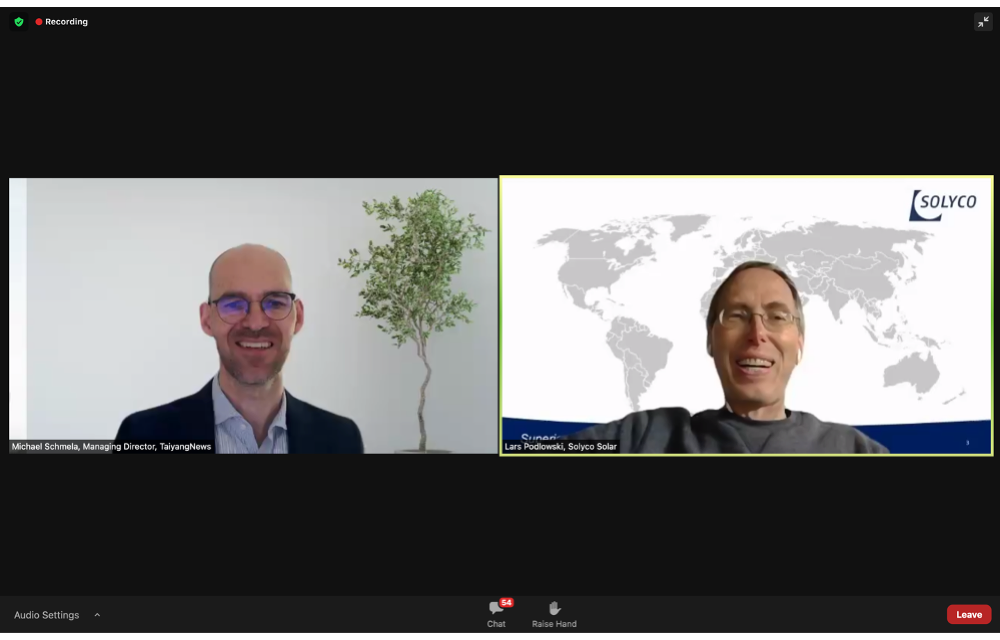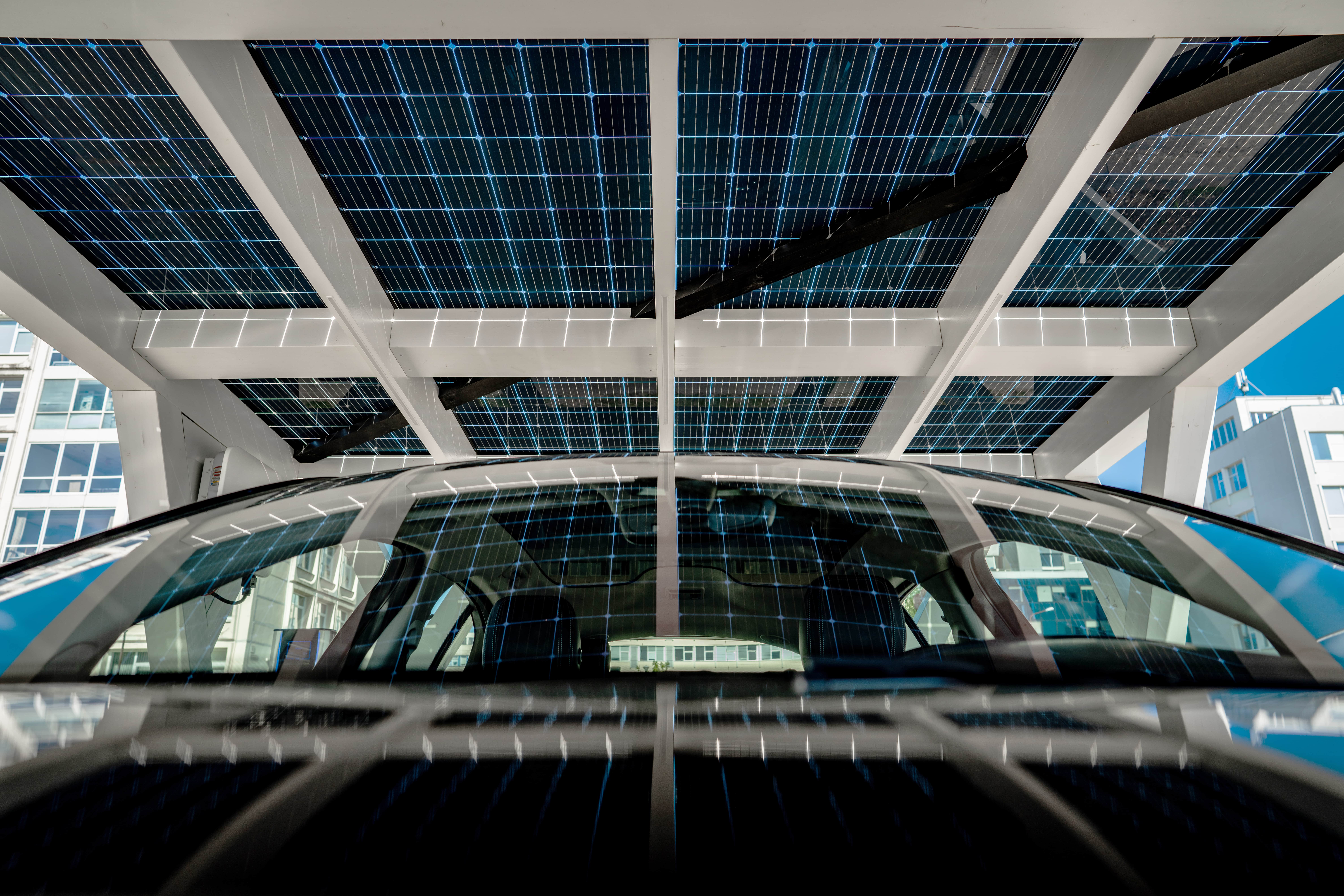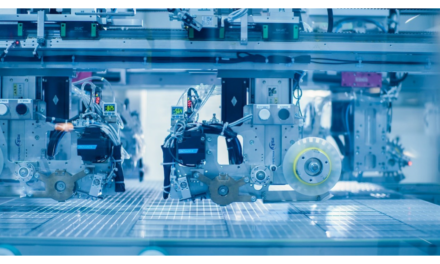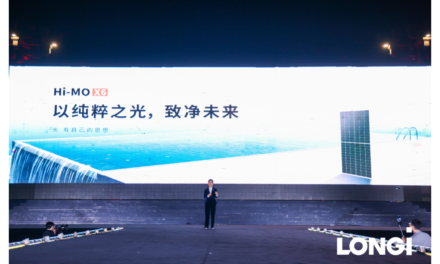- Day 2 of TaiyangNews Intersolar Munich Review Conference discussed rooftop solar modules based on advanced cell architectures, as introduced at Intersolar Europe 2022
- Dr Markus Fisher of ITRPV said the industry needs to make coordinated efforts to bring down costs by lowering silver and polysilicon consumption
- Presenters from Trina Solar, JinkoSolar, Chint Astronergy, Jolywood, and SPIC showcased their rooftop solar modules for European market
- Lars Podlowski of Solyco Solar in the fire chat said solar industry is working to make solar beautiful with sleek, all black variants
After an insightful Day 1 of TaiyangNews Intersolar Munich Review Conference when the focus was on product innovations in the field of utility scale solar at Intersolar 2022, Day 2 on May 25, 2022 was focused on the rooftop solar segment (see Day 1: Intersolar Munich Review Conference).
Participants on day 2 discussed latest rooftop modules based on advanced cell architectures.
In his opening remarks, Co-Chair of ITRPV Dr Markus Fischer shared the international technology roadmap for Photovoltaic 2022. Pointing at the vast potential for this technology, he stressed that the industry needs to overcome supply chain issues to be able to focus on faster growth.
Going forward, there is expected to be further cost reduction as the industry brings down polysilicon consumption by reducing thickness, Kerf loss and undertake process optimizations, but it needs to be seen how large wafer sized formats will counter this cost as these need more polysilicon.
Similarly cells will likely bring down their silver consumption. He also showed that the solar industry doesn’t have to worry about the supply of silver as the key raw material for cells even at a 1 TW/year scale, showing that the photo industry had used nearly 40% of the market in its peak times, something the solar industry would not reach at that level.
Even as monocrystalline dominates the market, Fischer said at Intersolar Europe 2022 there were still few manufacturers promoting their multicrystalline products, a technology that is a niche today and close to extinction. He also said N-type is likely to gain market share even as P-type will stay mainstream as base for P-PERC at least till 2026.
Since N-type requires more silver, the industry would need to make efforts to reduce its consumption.
In terms of wafer sizes, M10 and G12 will dominate future installations but these do require new tools in new fabs.
Despite conservative forecasts for solar PV from various quarters, ITRPV believes the PV learning curve will continue in the future and several 100 GW markets are possible too, but it would need the industry to ensure efficient use of all materials and overcome supply chain challenges.
During Day2 of the event several of the global leading Tier 1 companies presented about their latest module developments displayed at Intersolar:
Trina Solar Europe’s Head of Product Solutions and Marketing Adele Zhao presented the company’s ultra-high performance module series for all rooftops under the Vertex series which it displayed at Intersolar. Branded Vertex S and Vertex S+, these modules cater to European rooftops including commercial and industrial (C&I) segments, with power output ranging between 425W and 580W with efficiency of up to 21.5%. Vertex S+ is an n-type product.
Zhao explained that the choice of modules for customers is also related to various countries in Europe having different regulations, requirements and roof types. At the same time, in order to ensure lower carbon footprint and costs for transportation for its growing overseas business, Trina Solar tries to pack in high power products to overseas markets including Europe.
Head of Technical Service and Product Management at JinkoSolar, Roberto Murgioni talked about a rooftop variant of N-type Tiger Neo module which it launched for the European market at Intersolar Europe 2022. Based on 182mm wafer sized cells, these modules with 415W output and 21.25% efficiency cover less area and deliver higher output, he explained.
JinkoSolar has also entered the BIPV segment touting N-type products with up to 21% efficiency. The company is offering transparent all black curtain wall series as well as colorful curtain wall series in keeping with aesthetics and beauty of the structure. The company has also entered energy storage segment, now offering battery storage products.
Another module maker targeting the European rooftop solar segment is Chint Astronergy whose Technical Service Manager Baohua He stated the advantages of Astro N Series for rooftop applications. Under this, the company offers ASTRO N5s, which is aimed for residential segment with up to 430W output. He also discussed its BIPV-Telogy PV roof product of the company based on Astro N5 modules that are currently supplied within China.
Chint Astronergy said it plans to start mass production of Astro N modules with 3 GW capacity in July 2022, scaling it up to 6 GW by 2023 eventually aiming for 20 GW by 2025.
Speaking about packaging high efficiency TOPCon technology with stunning aesthetics, n-type solar module pioneer Jolywood’s Marketing Director Nickey Zhu presented the Chinese company’s rooftop solar module Niwa that it exhibited at Intersolar, for both residential and C&I segments. With an all black design, the 182mm wafer based Niwa Black module for residential segment has an efficiency of 21.76%, power output of 425W and weighs 24.5 kg to offer a good looking rooftop product.
Zhu added that currently Jolywood has a TOPCon production capacity of 3.6 GW and plans to expand it by another 16 GW.
Chief Brand Officer of State Power Investment Corporation (SPIC) of China, Franklin Miao shared perspectives on industrial IBC cell and module technology to reach higher efficiencies. Claiming to be the 1st company in China to go into mass production for N-type IBC solar products, Miao said SPIC witnessed maximum interest for its Andromeda Flexible VIPV module series with 195W output. Miao also spoke about its all black bifacial series Andromeda 2.0 with 390W output and up to 21.7% module efficiency based on IBC and N-type technologies.
Miao said IBC technology is perfect for buildings and rooftops with advanced cell architectures.
The company currently has a 400 MW N-TOPCon cell capacity at Xi’an along with a 200 MW N-IBC cell and module fab at Xining as well as a 500 MW P-PERC cell production capacity also at Xining in China.
Interestingly, the company’s new n-type glass-glass products were offered at 30 year warranties with only 1% degradation in the first year, compared to the typical 2% for P-type PERC modules.
Fire chat
To discuss Intersolar Europe learnings on rooftop solar, TaiyangNews Managing Director Michael Schmela engaged in a fire chat with the CEO of Solyco Solar, Lars Podlowski. Solyco is a module supplier, which sources its products from China and sells it under its own brand in Europe.
According to Podlowski, there is a clear and growing trend towards N-type technology in the market as it promises higher efficiency which is particularly significant for rooftop solar segment vis-à-vis ground mounted solar. He also sees a growing number of manufacturers offering sleek, all black variants for rooftop solar segment along with to make a technical product as solar module look ‘beautiful’.
Colored solar panels or BIPV products are also being offered by some which Podlowski believes will remain a niche market segment. But with a quickly growing market volume, this will grow in absolute numbers.
Agreeing with Schmela’s point of educating installers whom he termed as the gatekeepers to houseowners, about various technologies in the market, Podlowski said even if installers are well-aware of the various features, it is difficult for them to explain it to homeowners. He said higher power output and cost are the 2 key selling points for module makers when it comes to end consumers.
While TOPCon is growing in popularity, Solyco Solar’s CEO said heterojunction (HJT) holds potential for residential rooftop solar. He believes a wafer size of M10 based on HJT technology should be ideal for this segment however most HJT manufacturers are either still producing M6 modules or are straightaway jumping to G12.
He hailed efforts of Chinese solar industry to bring in standardization in the vertical supply chain that has contributed to lowering costs.
In late June 2022, TaiyangNews will be coming out with a report titled What’s Hot At Intersolar covering solutions and products introduced at the event.















